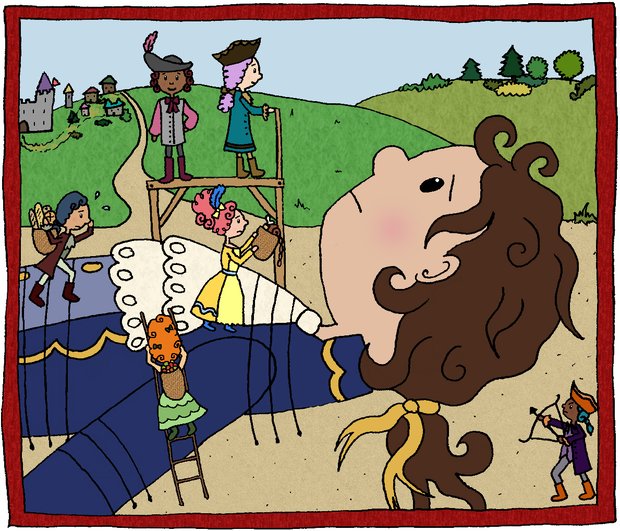Gulliver’s Travels
Add to My Folder
The 2014 National Curriculum states that KS1 and KS2 children should ‘develop their love of literature through widespread reading for enjoyment’. What better place to start than with the fantastical adventures of Gulliver? Brenda Williams’ brilliant article contains all sorts of reading and writing activities to help engage children with this tale of wonder and jeopardy. Even better, they’re all based on her super-accessible adaptations from the text, which are perfect for developing vital skills like drawing inferences, identifying key ideas and extending vocabulary.

The National Curriculum
The overall aims of the National Curriculum for English include the need for children to develop their love of literature through widespread reading for enjoyment, which will increase their vocabulary, as they encounter words they might not hear or use in everyday speech. Teacher-led discussions about literature, will also help children to acquire an understanding of grammar and linguistic conventions.
Reading and comparing the two stories of Gulliver will develop children’s understanding of ‘points of view’ in literature, and discussing essentials of plot, quest and characters will help them both in their future writing and in constructing their own version of the third chapter to Gulliver’s travels. Drawing inferences, about the feelings and thoughts of characters, will aid them in creating believable characters, and role-play will assist them in structuring dialogue.
Looking for alternative words to those used in Brobdingnag story will encourage children to seek a wider or more definitive choice in their speaking and writing vocabulary.
How to tackle ’Gulliver’s Travels’
‘Gulliver’s Travels’ was first published in 1726. It was written as a parody of travel books and was a great success. Some gullible readers actually believed the stories to be true, influenced perhaps by the fact that it first appeared under the title ‘Travels into Several Remote Nations of the World’ and purported to have been written by Lemuel Gulliver. The true author, Jonathan Swift, was born in Dublin in 1667 and died in 1745.
Introduce the children to the history of the text using the information above. Explain that Gulliver is a fictitious character, created by Jonathan Swift and that later you are going to read adapted versions of the first two chapters of the book – A voyage to Lilliput on Story sheet A and A voyage to Brobdingnag on Story sheet B . Before you do this however, read and discuss the passage below, which sets the scene for the book.
Sometime around the year of 1689, following an apprenticeship to a London surgeon, Gulliver spent some years at sea employed as a ship’s surgeon. During this time, he made several voyages to the East and West Indies. When he went ashore, he was always interested in the people he met, and enjoyed learning their languages and customs. On one such voyage he was shipwrecked during a violent storm, and, ‘pushed forward by wind and tide’, managed to swim to the unknown island of Lilliput, where, exhausted, he collapsed on the shore and fell into a deep sleep.
Already a member? Sign in below.
Published 25 May 2016
Reviews
You need to be signed in to place a review.







